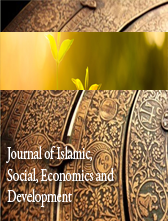ADAPTIVE PARTICLE FILTER (APF) BY USING NOISE AND SAMPLE SIZE FOR MOBILE FLOOD LEVEL PREDICTION
Abstract
Urban flooding causing annual deaths and financial losses. Various technique has been applied to estimate the flood level. One of the low-cost solutions, which is using an initial sensor in the smartphone, can be used to predict the flood level, and respond to the warning message to the community by sending it to the cloud. However, in the challenging situation during flood especially low internet connectivity, the processed particle data might be suffered from the sample impoverishment phenomenon, caused by sensor sensitivity and real-time transmission, which is lead to inaccuracy of flood level prediction. In this paper, a new particle filter will be designed and implemented in the mobile flood level prediction system by adapting noise and sample size from particle data input. This is for optimizing the data input, thus, can provide better flood level prediction and finally can share the alert information with other users. To accomplish this, numerous volunteers will take mobile sensor readings as more than 10000 readings in different depth levels, then, can be used to train machine learning models. Simulation results show that proposed particle filter achieved better performance compared with other variant when applied the flood level prediction system. In conclusion, the adaptive proposed.













